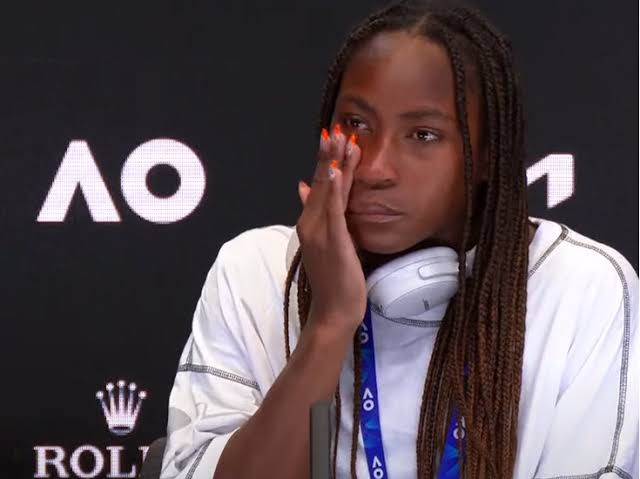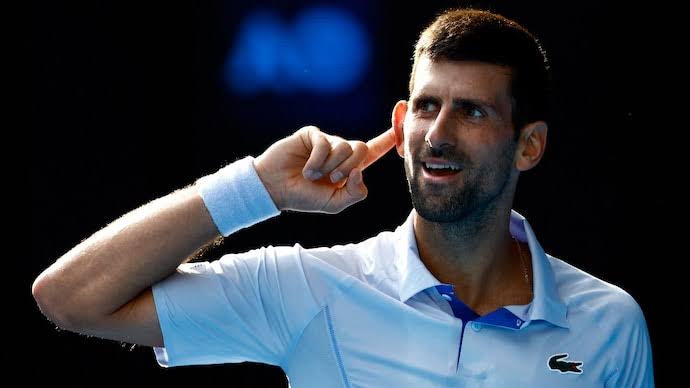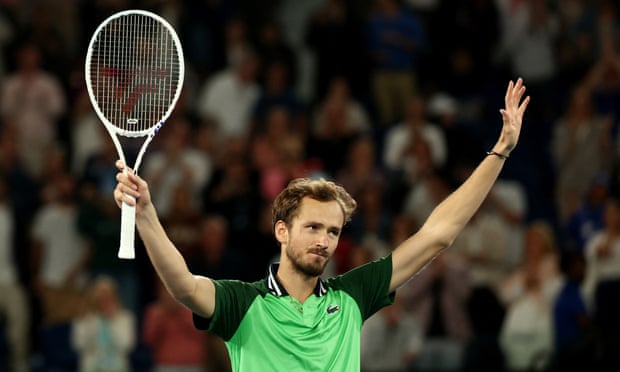“Controversial Clash: Accusations Fly as Opponents Allege Coco Gauff Used Unconventional Tactics, Claiming Her Victories Are Not Ordinary; Shockingly, Coco Gauff Slumps After Racket-Head Incident.”
In a surprising turn of events, the tennis world is abuzz with controversy as opponents of the rising star, Coco Gauff, have leveled accusations, suggesting the utilization of unconventional tactics during matches. Alleging that her recent victories are not ordinary and fueled by mysterious elements, a contentious incident unfolded when opponents claimed Coco Gauff engaged in the use of jazz – a term loosely associated with an enigmatic style of play.

Tensions reached a boiling point when, during a particularly heated match, opponents resorted to a startling act: one of them reportedly struck a racket on Coco Gauff’s head, intensifying the claims of foul play. The shocking incident has sent shockwaves through the tennis community, sparking debates on sportsmanship, fair play, and the scrutiny players face as they ascend the ranks.
As the controversy unfolded, Coco Gauff, known for her poise on and off the court, surprisingly slumped after the racket-head incident. The unexpected turn of events has raised questions about the psychological toll such accusations and physical confrontations can have on athletes, especially those still in the early stages of their career.
In response to the allegations, Coco Gauff’s camp has vehemently denied any wrongdoing, emphasizing the young player’s commitment to fair competition and the values of the sport. Tennis authorities are now investigating the incident, aiming to unravel the truth behind the claims and ensure the integrity of the game is upheld.
This controversial chapter in Coco Gauff’s career has ignited discussions not only about the intricacies of her playing style but also about the broader challenges faced by young athletes navigating the competitive landscape. The incident serves as a reminder of the intense scrutiny athletes endure and the importance of maintaining a supportive and fair environment within the world of professional sports.
As the tennis community awaits the resolution of this controversy, the incident involving Coco Gauff has already left an indelible mark on the sport, prompting a reevaluation of the dynamics between competitors and the impact of external pressures on the rising stars of the tennis world.The unfolding saga surrounding Coco Gauff’s alleged use of unconventional tactics and the shocking racket-head incident has sent shockwaves through the tennis world, prompting a closer examination of the challenges young athletes face in a fiercely competitive environment.
As investigations into the accusations continue, tennis enthusiasts and experts alike are dissecting Coco Gauff’s playing style to understand the origins of the controversy. Some argue that her unique approach to the game, characterized by a blend of agility, precision, and strategic innovation, may have inadvertently fueled speculations and led opponents to question the authenticity of her victories.
The incident in which an opponent struck a racket on Coco Gauff’s head has raised concerns about the physical and psychological toll of such confrontations on athletes. The tennis community is now grappling with discussions about player safety, sportsmanship, and the need for heightened vigilance to ensure that the spirit of fair play prevails on the court.
Coco Gauff’s reaction to the allegations and the subsequent incident has added a layer of complexity to the narrative. Known for her maturity beyond her years, Gauff’s emotional response and the impact on her mental resilience have become focal points in the broader conversation about the pressures young athletes face as they navigate the demanding world of professional sports.
The controversy has also sparked debates on the role of tennis authorities in maintaining the integrity of the game. As they delve into the allegations, there is a growing call for transparent and impartial investigations to address the concerns raised by both supporters and critics of Coco Gauff.
Regardless of the outcome, this incident is poised to leave a lasting imprint on the trajectory of Coco Gauff’s career and the broader tennis landscape. It underscores the need for continued dialogue about the expectations placed on young athletes, the evolving nature of sportsmanship, and the delicate balance between competition and camaraderie in the pursuit of excellence on the tennis court. As the tennis community grapples with these complexities, Coco Gauff’s journey becomes a symbol of resilience, adaptability, and the enduring spirit of competition in the face of adversity.






